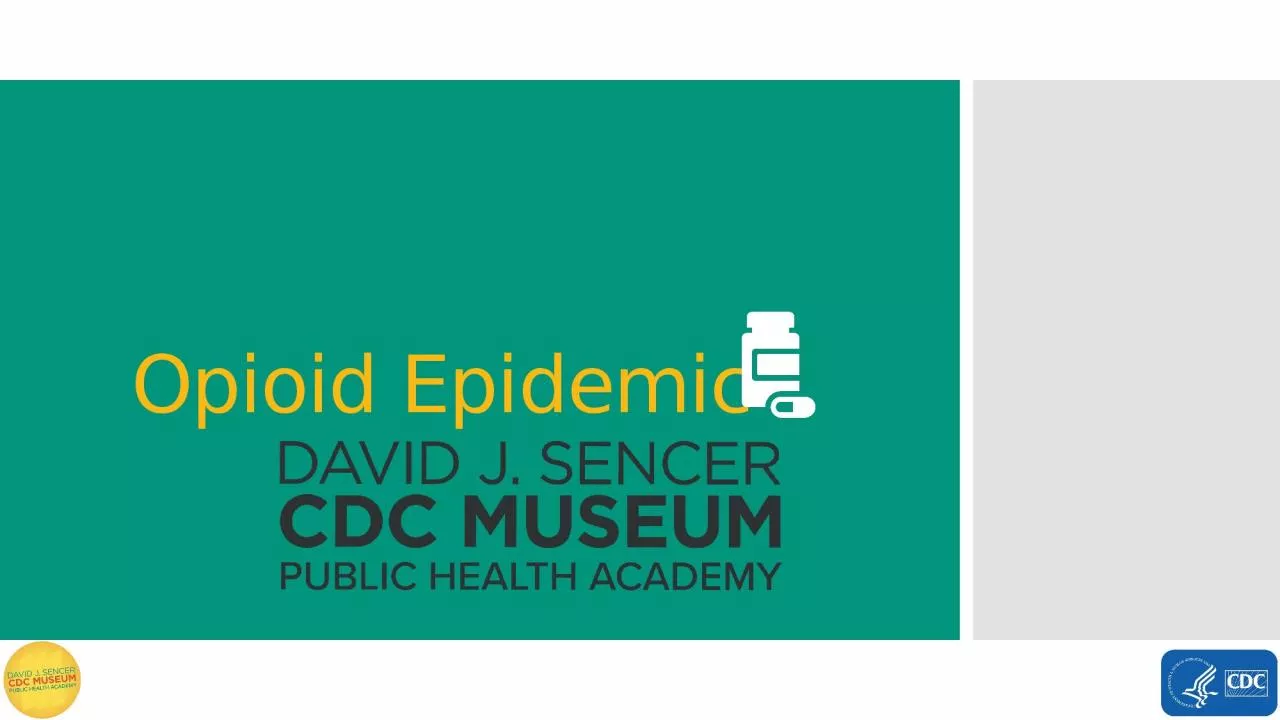

an increase in the number of cases of a disease above what is normally expected in that area injury to the body poisoning that happens when a drug is taken in excessive amounts when a persons use of drugs or alcohol results in health issues or problems in their work school or home life com ID: 933741
Download Presentation The PPT/PDF document "Opioid Epidemic Terms to Know" is the property of its rightful owner. Permission is granted to download and print the materials on this web site for personal, non-commercial use only, and to display it on your personal computer provided you do not modify the materials and that you retain all copyright notices contained in the materials. By downloading content from our website, you accept the terms of this agreement.
Slide1
Opioid Epidemic
Slide2Terms to Know
an increase in the number of cases of a disease above what is normally expected in that area
injury to the body (poisoning) that happens when a drug is taken in excessive amounts
when a person’s use of drugs or alcohol results in health issues or problems in their work, school, or home life; commonly called addiction
adaptation to a drug that produces symptoms of withdrawal when it is stopped
humanmade; in this context, drugs that are made in a laboratory or illegally
the science of protecting and improving the health of people and communities
the nonmedical use of a variety of drugs that are prohibited by law
reduced response to a drug with repeated use
Word Bank
Dependence
Epidemic
Illicit drugs
Overdose
Public health
Substance Use Disorder
Synthetic
Tolerance
Slide3Understanding Opioids
Opioids are drugs that
interact with opioid
receptors on nervecells in the body and brainCommon opioids:Prescription drugs like oxycodone, hydrocodone, codeine, morphineHeroinSynthetic opioids like fentanyl and
carfentanilOpioids have high potential for addiction and overdose
Slide4Think About It
Why do you think people are dying from opioid
overdoses
?
What are some reasons why people use opioids?The U.S. Food and Drug Administration (FDA) monitors drug quality and safety. Why is it important to monitor medications?
Slide5Opioidsand CDC
Long-term use of prescription or illicit opioids can lead to an opioid use disorder, commonly known as addictionOpioid overdose deaths have been increasing steadily since 1999
Slide6Opioid Use Disorderand CDC
How can we reduce deaths due to opioid overdose?Recognize signs of overdose
Small, constricted “pinpoint pupils”
Falling asleep or loss of consciousnessSlow, shallow breathingChoking or gurgling soundsLimp bodyPale, blue, or cold skin
Passing 911 Good Samaritan LawsUsing naloxone to reverse overdosesMedication-assisted treatment (MAT)Syringe service programs
Slide7Think About It
Why is fentanyl causing such a dramatic increase in drug
overdose
deaths?
How do 911 Good Samaritan Laws help save lives?What responsibility do doctors have in ensuring their patients do not become addicted to the opioids prescribed to them?
Slide8From the Expert
https://youtu.be/ogTXanWuwUk
Slide9Think About It
Why should workplaces care about the health and safety of their workers?
What are the effects of
opioid use disorder
on the friends, family, and surrounding community of people who are affected by it?During the COVID-19 pandemic, many of the support services for people with OUD were shut down. How do you think that affected rates of drug overdose?
Slide10Give it a Try
Call to Action!
Build empathy for people with opioid use disorders (OUD).
Design an intervention for opioid use disorder (OUD).
Share your findings.
Why do you think participation is important?
Slide11Use the Public Health Approach
Slide12Give it a Try
1. Build Empathy for People with Opioid Use Disorders (OUD)
Watch and read stories from CDC’s Rx awareness campaign, which focuses on people affected by opioid use disorder
Rx Awareness
Slide13Give it a Try
2. Design an Intervention for Opioid Use Disorder (OUD)
Surveillance:
What does the data show about opioid overdose deaths?
Risk Factor Identification:
Which populations are most at risk?
Intervention:
What has worked in the past to address the problem?
Implementation:
What intervention will you implement and how?
Slide14Give it a Try
3. Share Your Findings
Instagram @CDCmuseum
Slide15Questions?